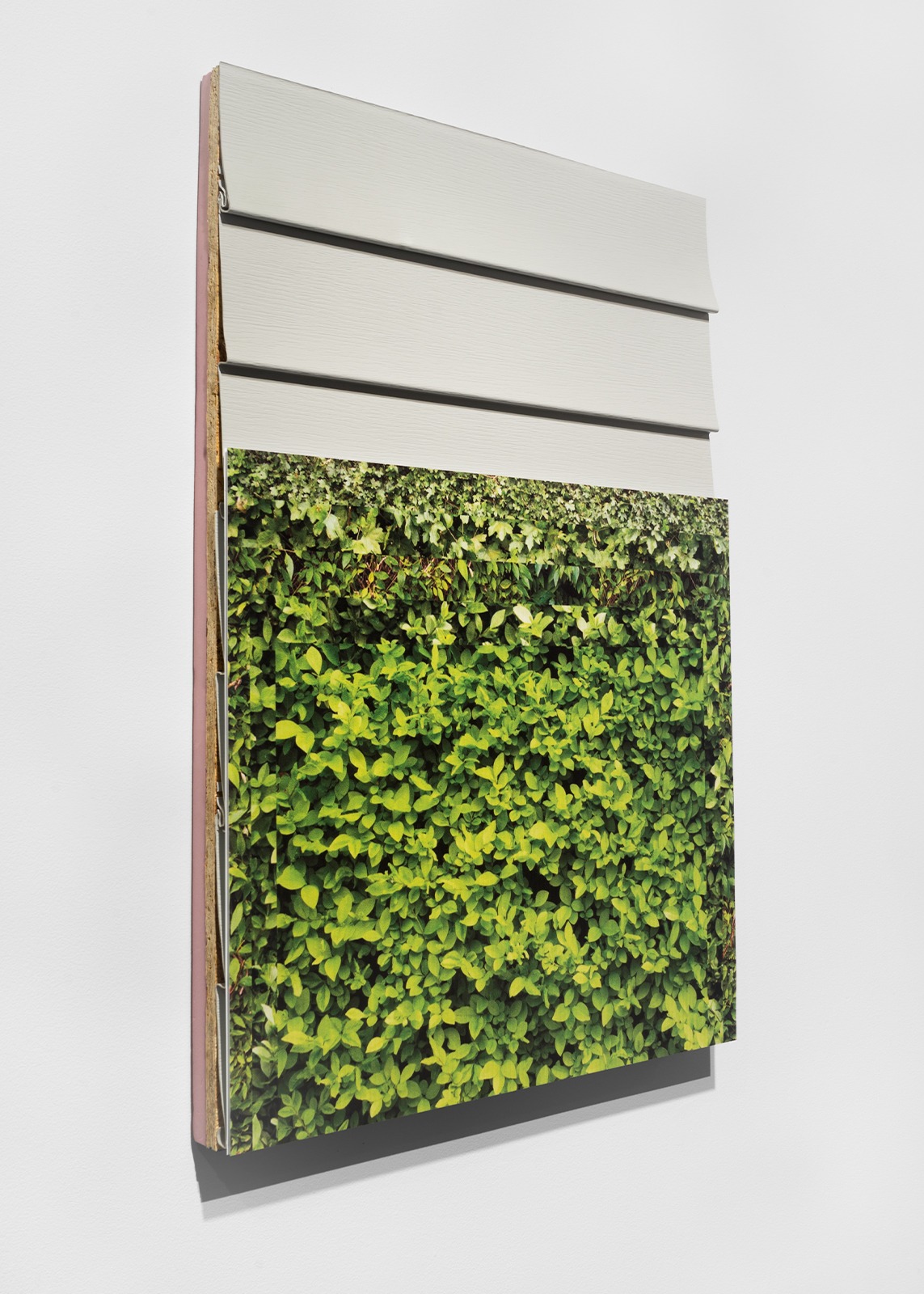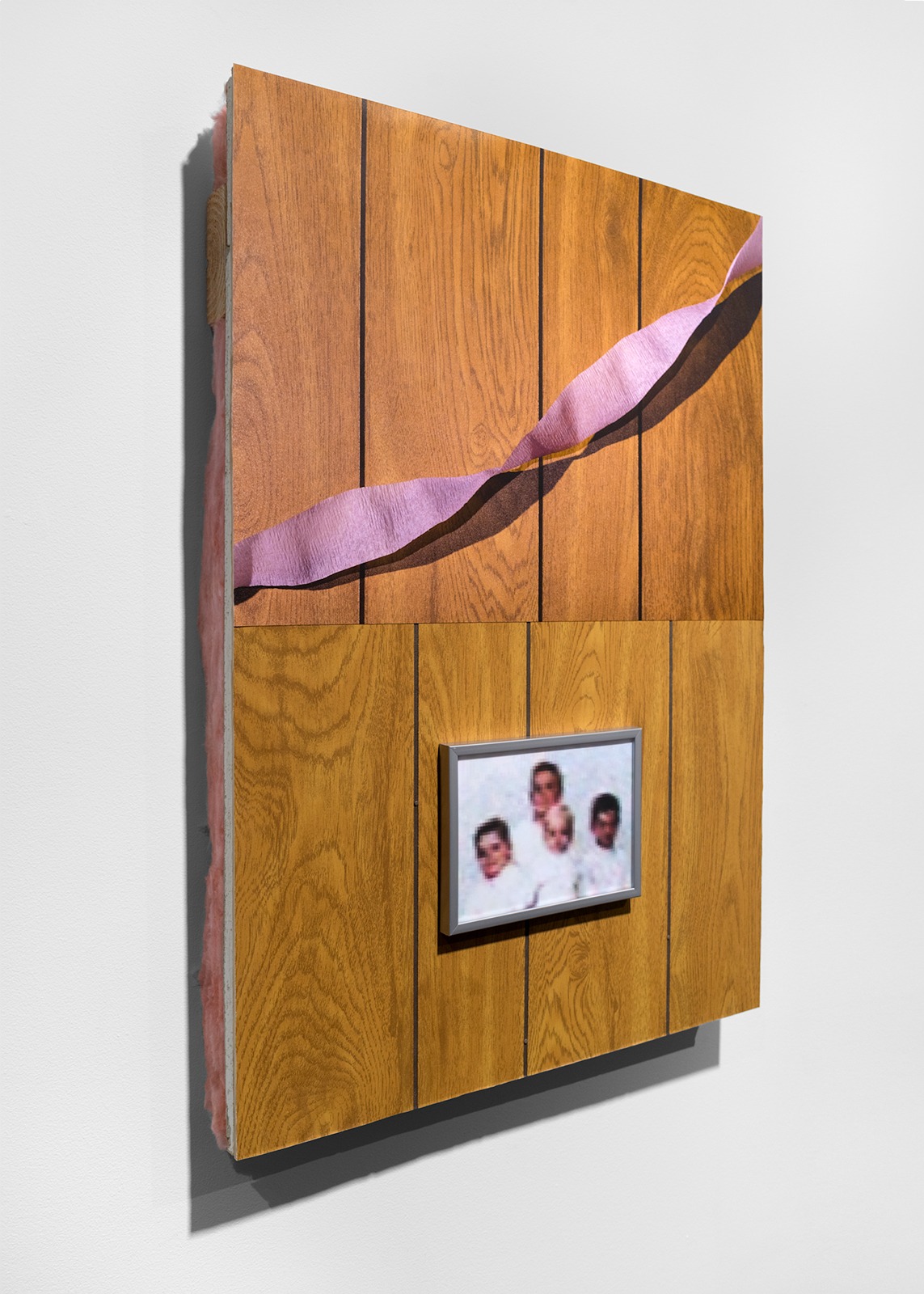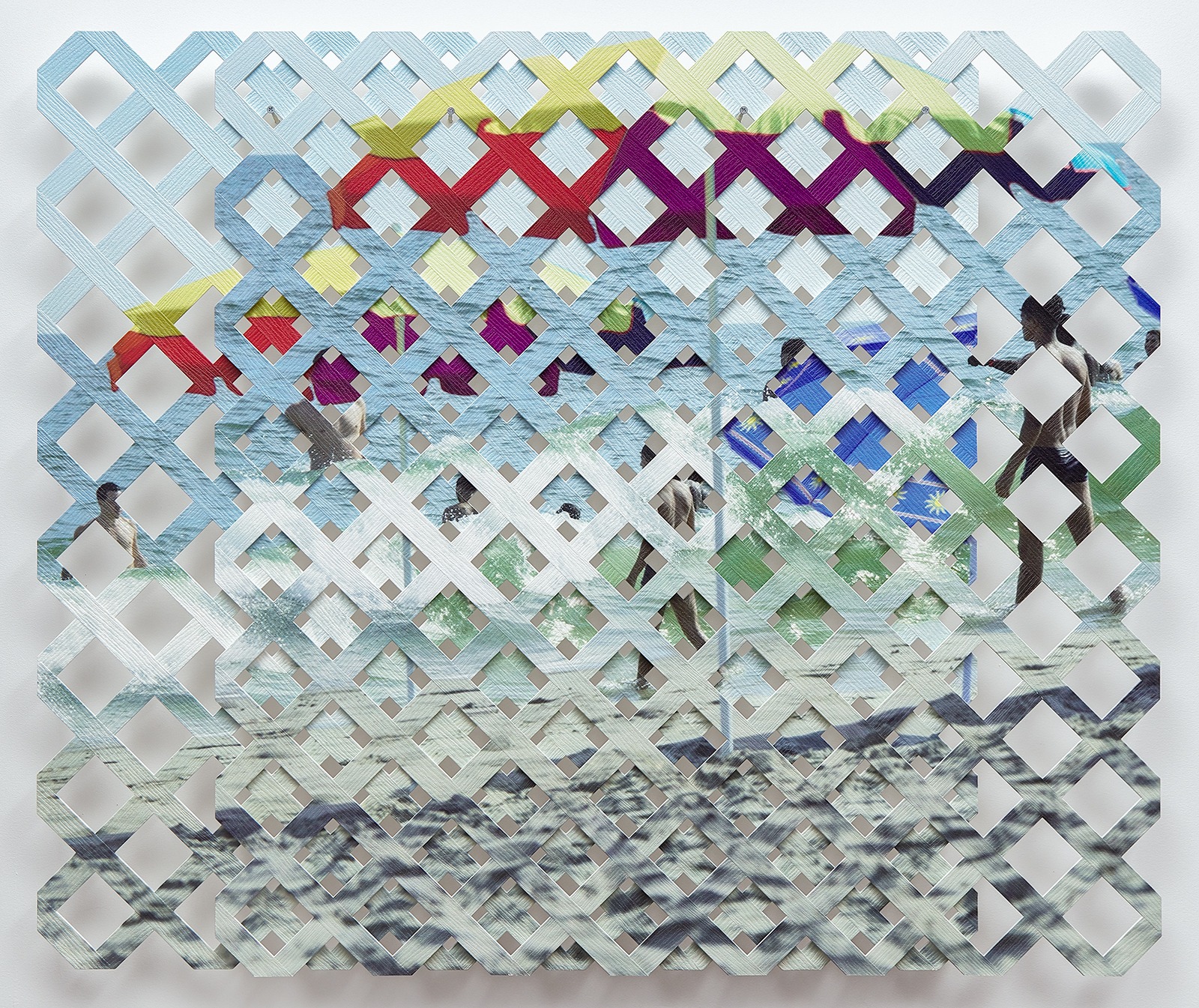






Real Realities uses common faux surfaces and images, many of which were components of the houses I grew up in, to emphasize the role of societal values and idealized aspirations woven into the fabrication of domesticity. As I grappled with the things I longed for as a 20-something person, including relationships and markers of success, I looked to the traditional American home for a better understanding of my roots. Constituting living spaces and informing our contained experiences within them, these substrates’ tenacious relationship with reality pivots on perception, replicating materials different than their own while functioning as a provisional analog for the original. This work posits that one’s sense of reality is contingent on its surroundings, recognizing these foundational environments as partial simulations. Likewise, the constitution of one’s desires may depend on external pressures rather than seemingly intrinsic sources.
Surfaces and structures inform our movements through space by acting as barriers and thresholds, determining areas through establishing a location’s function and purpose. They produce the characteristics of a given space and, by design, relay information reflective of social and cultural mores. Taking apart, reorganizing, and synthesizing sights from my past and present, I sought to understand better the origins of the things I wanted, whether relational or material, to take greater ownership of my life. Analogous to how an understanding of a given text will vary based on the reader’s education and experiences, the subtleties of one’s environment can impact a worldview. The language that gives form to meaning contributes to the message itself. In creating these semi-photographic tableaux, inspired by instances of personal loss and longing, I began to take an active role in defining my internal vocabulary and landscape.







Using common faux surfaces and images, many of which were a part of the houses I grew up in, these simulated materials emphasize the role of societal values and idealized aspirations woven into the fabrication of domesticity. As I grappled with the things I longed for as a 20-something person, including relationships and markers of success, I looked to the traditional American home for a better understanding of my roots. Constituting living spaces and informing our contained experiences within them, these substrates’ tenacious relationship with reality pivots on perception, replicating materials different than their own while functioning as a provisional analog for the original. This work posits that one’s sense of reality is contingent on its surroundings, recognizing these foundational environments as partial simulations. Similarly, the constitution of one’s desires may depend on external pressures rather than seemingly intrinsic sources.
Surfaces and structures inform our movements through space by acting as barriers and thresholds, determining areas through establishing a location’s function and purpose. They produce the characteristics of a given space and, by design, relay information reflective of social and cultural mores. Taking apart, reorganizing, and synthesizing sights from my past and present, I sought to understand better the origins of the things I wanted, whether relational or material, to take greater ownership of my life. Analogous to how an understanding of a given text will vary based on the reader’s education and experiences, the subtleties of one’s environment can impact a worldview. The language that gives form to meaning contributes to the message itself. In creating these semi-photographic tableaux, inspired by instances of personal loss and longing, I began to take an active role in defining my internal vocabulary and landscape.
[/expander_maker]